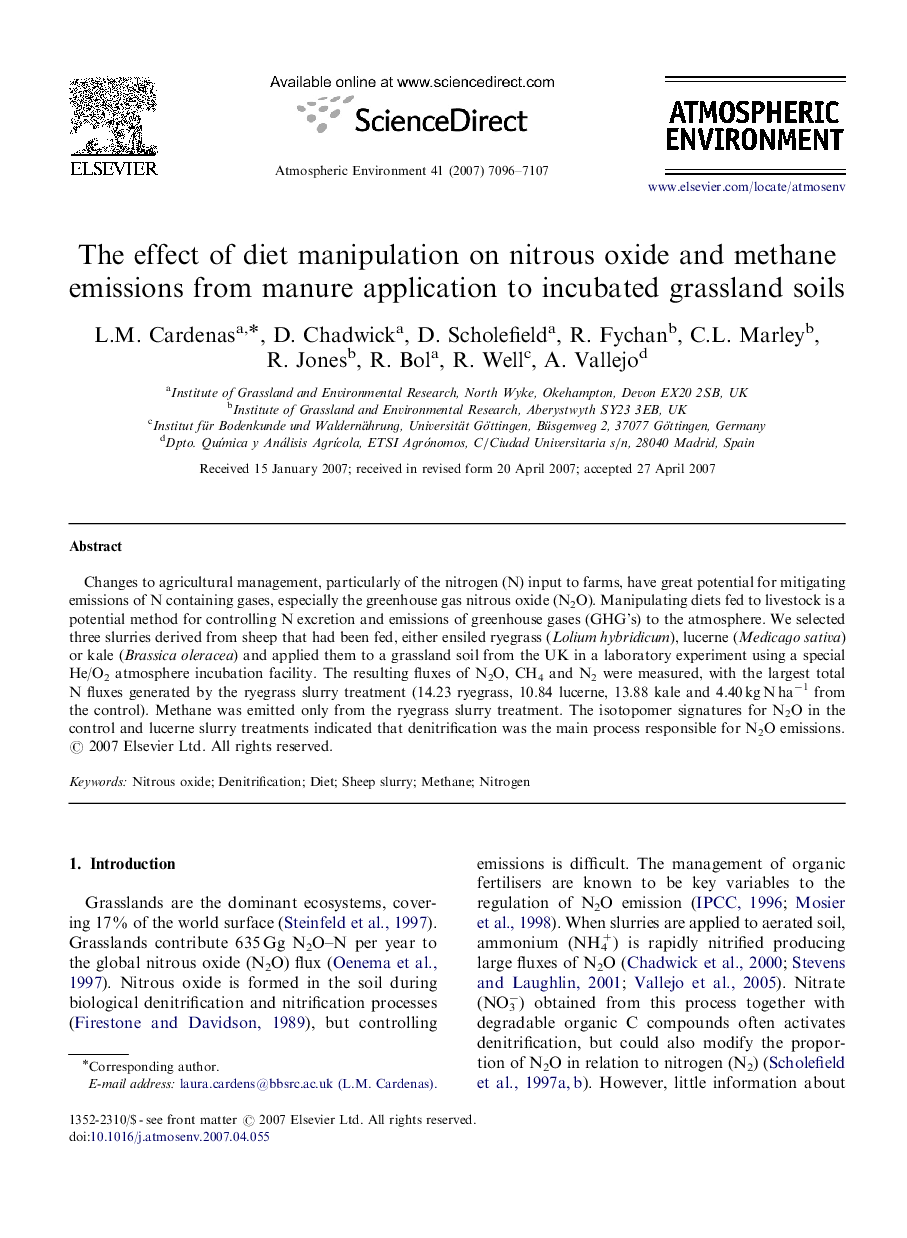| Article ID | Journal | Published Year | Pages | File Type |
|---|---|---|---|---|
| 4443389 | Atmospheric Environment | 2007 | 12 Pages |
Changes to agricultural management, particularly of the nitrogen (N) input to farms, have great potential for mitigating emissions of N containing gases, especially the greenhouse gas nitrous oxide (N2O). Manipulating diets fed to livestock is a potential method for controlling N excretion and emissions of greenhouse gases (GHG's) to the atmosphere. We selected three slurries derived from sheep that had been fed, either ensiled ryegrass (Lolium hybridicum), lucerne (Medicago sativa) or kale (Brassica oleracea) and applied them to a grassland soil from the UK in a laboratory experiment using a special He/O2 atmosphere incubation facility. The resulting fluxes of N2O, CH4 and N2 were measured, with the largest total N fluxes generated by the ryegrass slurry treatment (14.23 ryegrass, 10.84 lucerne, 13.88 kale and 4.40 kg N ha−1 from the control). Methane was emitted only from the ryegrass slurry treatment. The isotopomer signatures for N2O in the control and lucerne slurry treatments indicated that denitrification was the main process responsible for N2O emissions.
